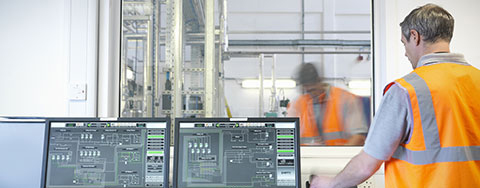Human-Machine Interface (HMI)
Conventionally, the HMI was a console located next to a machine to give the operator a basic level of control over a process. Today, HMIs are “digitized” and the process is graphically displayed. This “digitized” mode of control over the physical world still involves the traditional “keyboard-mouse” pairing, but new ways of interacting are also emerging.
Touch-screen consoles and smartphones are already regularly used. In the future, voice recognition, augmented reality and sensory gloves are likely to feature too.





